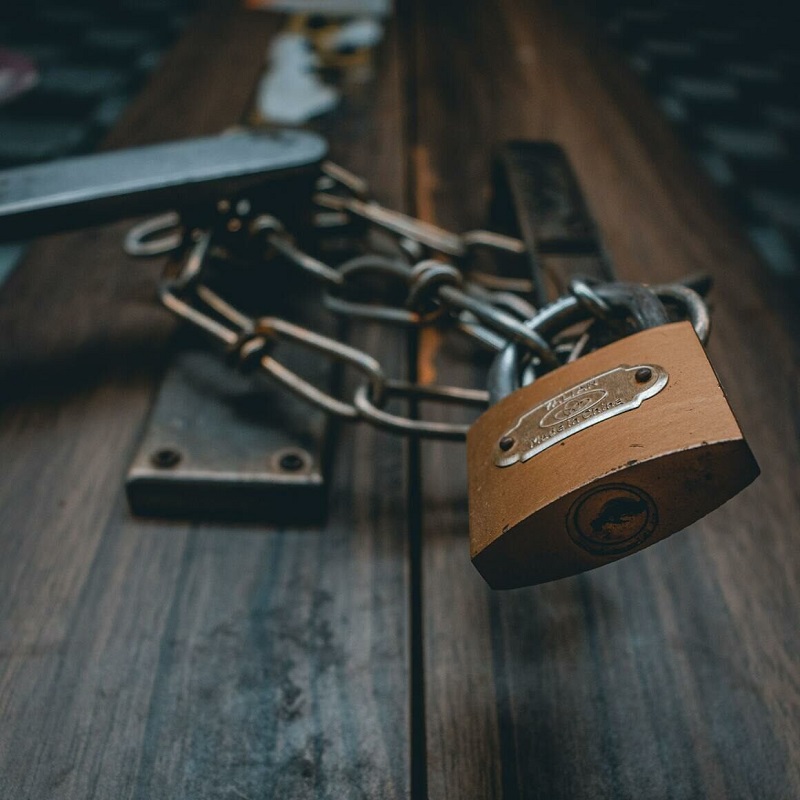One of the best urban survival skills you must have is opening locks. In this article, we’ll explain the basics of lockpicking. We’ll also explain the mechanism that makes locks work (or fail to work). But first, let’s talk about its legality.
Legality of Lockpicking
People commonly associate lockpicking with criminal activity. Often, people believe that licensed locksmiths and first responders are the only ones who can legally own lock picking tools. That’s not entirely true.
In most states and provinces, you can legally own, carry, and use lock picking kits as long as you don’t try to illegally enter someone’s home. Some states and countries, however, look at lock picking tools as prima facie evidence of criminal intent. You must then prove otherwise.
Parts of a Lock
Before you start learning the basics of lock picking, you must first know the basics of a lock. The following are the components of the pin tumbler lock; understanding them will help you learn how to manipulate them.

- Cylinder: the cylinder is the container of the rest of the lock’s components. It creates the upper limit of the so-called shear line, which we’ll tackle in a bit.
- Plug: the plug is another cylindrical metal that rotates inside the cylinder once you insert the key. It’s also where you insert the lock picks to interact with the pins inside the lock.
- Shear Line: the shear line is the gap between the plug and the cylinder, and it allows the plug to freely rotate. If something blocks it, then the lock won’t open.
- Key Pins: key pins are the lower set of pins that “read” the cuts to the key or your lock picks. They have different heights that match the cuts on the key meant to fit the lock.
- Driver Pins: the upper set of pins are the driver pins, and they obstruct the shear line. Unlike the key pins, the driver pins have the same heights.
- Springs: the springs push the rest of the components down in the plug. They ensure the driver pins are obstructing the shear line when the machine is locked.
Together, these components work to read the key you insert to unlock a pin tumbler lock.
Lockpicking Explained
While there are many ways you can pick a lock, the most useful one to learn is the single-pin picking technique. Using this technique, you push each pin up with a hook-type pick. This method helps you fully understand what’s going on inside the cylinder when you try picking the lock.
Here are the steps:
1. Create the First Binding Pin
Insert the short end of your tension wrench lockpick into the bottom of the keyway. Apply light pressure to the plug and maintain it throughout the process.
2. Locate the First Binding Pin
Find the hardest pin to lift by inserting your hook-type lockpick raise each pin and gauge their looseness. Continue doing this until you find the pin that’s more difficult to move.

3. Set the First Binding Pin
Lift the binding pin until you either hear a clicking sound or feel a rotation inside the cylinder.
4. Repeat Until the Shear Line is Clear
Once you’ve located and set the first binding pin, another pin will obstruct the shear line. Remember that to unlock the machine, you must clear the line.
Repeat steps 1 to 3 on the second binding pin, and then to the third, and so on. Once you’ve all the pins, the shear line is clear, and you can fully rotate the plug.
Lockpicking Tools
You can’t pick a lock without the right tools. The following are the three most essential pieces of lockpicking equipment you must have:
- Tension Wrench: the most important piece to master, the tension wrench serves as the key that lets you turn the plug. It places tension on the pins so that the cylinder can rotate to bind pins when they clear the shear line.
- Hook Picks: hook picks are used for single-pin picking. Small hooks are best for most pin and tumble locks, while large pins are best for locks with long cylinders.
- Rake Picks: most rakes are for setting multiple pins at once. Most rakes are a variety of patterns that resemble the cuts on a real key.
Other types of lock pick and quick-entry tricks exist, and but the three above are the most important ones to learn when mastering the art of lockpicking.






